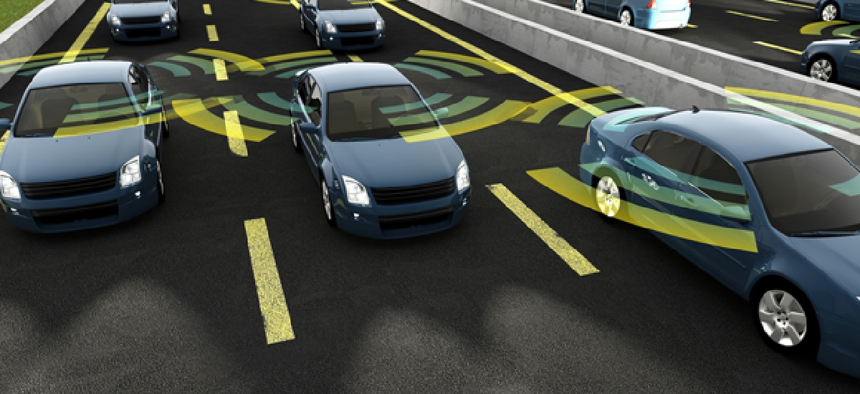Connected vehicles need reserved spectrum, DOT says


Connecting state and local government leaders
The Department of Transportation wants to preserve the spectrum that has been set aside for connected vehicle communications, according to one of the agency's top managers.
The Department of Transportation wants to preserve the spectrum that has been set aside for connected vehicle communications, according to one of the agency's top managers.
"We do believe the spectrum should be preserved" for safety applications such as Dedicated Short Range Communications (DSRC) in vehicle-to-vehicle technology, Deputy Assistant Secretary for Policy Finch Fulton said at a "State of Autonomy" event on July 11.
The Transportation Department doesn't want to choose the technologies that will support the emerging self-driving vehicle revolution, Fulton said, but it can help set firm rules of the road. Dedicated spectrum to support vehicle safety transmissions is a key ingredient in the mix, he said.
A number of connected vehicle pilots that use DSRC, including a programs in Denver and Columbus, Ohio. There are currently 80 deployments of DSRC around the country, according to Fulton's presentation at the event.
Federal Communications Commission Chairman Ajit Pai said in early June that he wants to open up spectrum for different unlicensed applications. The bandwidth would incorporate 75 MHz of the 5.9 GHz band that has been set aside for DSRC use. Advocates for repurposing the band say that DSRC use cases are few, and the band is being underutilized.
"We do need to see greater widespread use of this band," Fulton said in his remarks, but the technology is reaching a "tipping point" that would bring more demand and technology to address it.
He said industry is "excited" about the bandwidth, and the department was helping to build a solid foundation for safe autonomous vehicle communications with the bandwidth.
"We're at the point, where [applications] are going to pick up," he said. "We need to make sure this band is preserved for traffic safety purposes." He urged industry to "make your voices are heard" about the spectrum and its potential for safety, stable connectivity and technical efficiencies.
"We do want to protect the spectrum.… We don't want to say 'it must be DSRC,' or that it must be some future 5G technology that's being developed," said Fulton. "We need to give the innovators the opportunity to come together to find the best technology that works in the long run. We don't want to be the chooser of technology, because the government doesn't have a great track record in that," he said.
This article was first posted to FCW, a sibling site to GCN.

NEXT STORY: 4 questions to help gauge AI readiness




